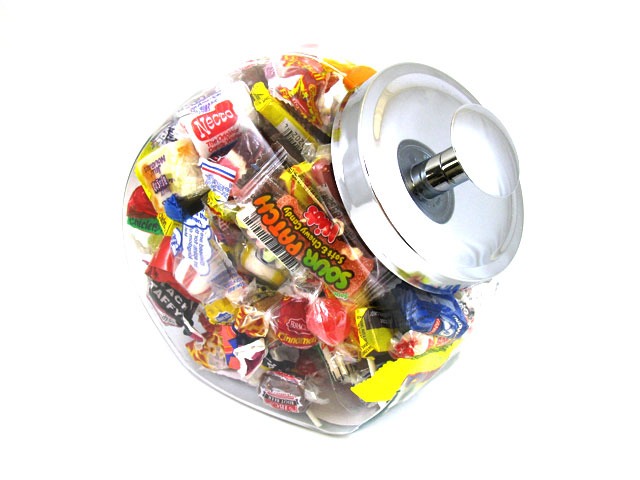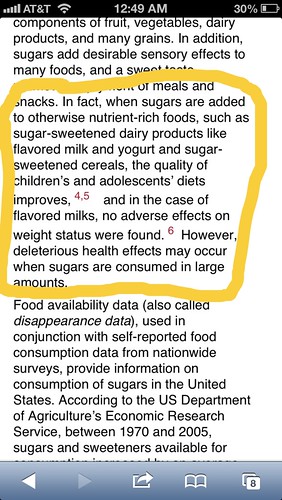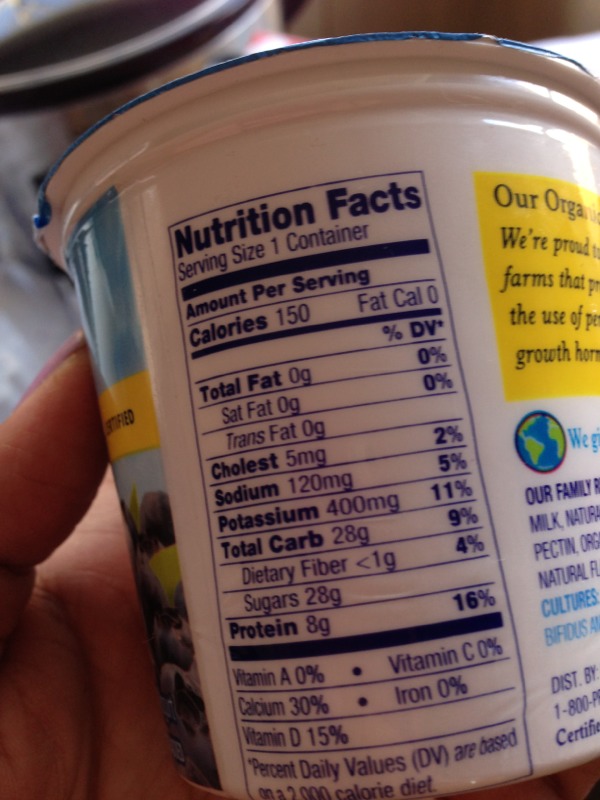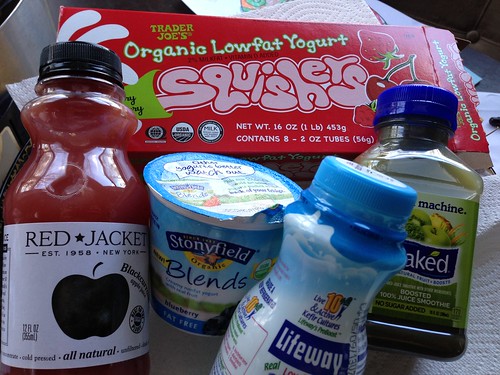I have a classic penny candy jar sitting on my kitchen counter. It’s where I collect and store most of Biggie’s candy from parties, school, holidays, etc. Many days go by and the candy is left untouched, but then there are other days when a piece of candy is a reward or dessert or just because. This, for us, allows us to moderate that slippery slope of candy possession and have frequent conversations on “sometimes treats.”

Treats, for me, have always been associated with sugar. When I was a kid, I would hoard and hide candy because that’s what I did. I’d hide it because I knew it was bad and I’d indulge when no one was looking. And by indulge, I mean, OVERindulge.
This relationship with sugar is how I see stealth sugarin our food today, especially the food that’s marketed to our children. Just because it’s hidden or disguised doesn’t mean it’s healthy. The food that’s marketed to our kids is big business—to the tune of $10 billion a year. I see the trends in marketing to food to kids, I talk about said trends, and hey, I even fall for said tactics, often because it’s convenient or it’s on sale, or my friend recommended it.
What we need to see are food companies more accountable and transparent about the stuff they’re putting on our shelves and advertising to our kids.
I bring this up because I am attending a media event discussing a popular smoothie marketed to kids. They’ll be sharing a “secret” that they say moms will want to know, and believe me, I do want to know…but what I want to know may be a little different than what they’re telling me.
I’ll be up front: I’ve bought these “sometime treats” for my kid before. I took advantage of coupons and was duped by the clever placement (eye level for my 5 year old) in the dairy aisle. I haven’t bought these smoothies in awhile because, quite frankly, I haven’t had to: I won a year’s supply of our favorite organic yogurt at BlogHer last year.
This is a photo of some of the sugary treats and yogurts from my fridge right now. While some may be good, the sugar content of most of these items are through the roof, hence sometimes treat.
While researching for today’s event, I had to refer to this AHA abstract to read up on the suggested sugar intake for kids.
Like most kids his age, Biggie gets sucked into the commercials that are geared to him and his peers. If C.C. and Rocky from Shake it Up are selling pickled herring, I’m sure he’ll spot it in Target the next time we go. It’s a well proven fact that marketing foods to kids with well known characters works. Hello? The partnership with Shrek and onions was awesome, but seriously, I need to see the Disney juggernaut market more wholesome food to our kids. Throw Mickey and Minnie on some apples and oranges, put Goofy on a banana and give Donald some broccoli to peddle: I hope to see a bigger shift in the food marketing paradigm to embrace produce and more unprocessed goods. See: Kids love Cuties.
Most food being marketed to kids have crazy sugar content, or dyes, or artificial everything. You and I know that, but does everyone else? According to AHA, sugar content in yogurt and dairy products hasn’t shown much adverse effects, but it’s the amount of sugar intake. Too much of anything is never any good.

I researched a bit about yogurt and added sugars, but will save my opinions on this after I learn more today. In the meantime, here are two important articles that I will be using as references for today’s media event this one from Marion Nestleand this one from Fooducate. Btw, I just downloaded Fooducate’s app—it’s brilliant!
Thought provoking quote from Marion Nestle’s post:
As I wrote of the competition between Dannon and Yoplait (owned by General Mills) in the yogurt chapter of What to Eat,
The chief weapon in the yogurt battles is sugar. Both brands are desserts. Sugars constitute 55 percent of the 80 calories in Go-GURT, 67 percent of the 90 calories in Danimals Drinkable, and 68 of the 170 calories in Danimals XL. Even in Stonyfield’s YoBaby organic yogurts…53% of the 120 calories come from added sugars. Some of Stonyfield’s yogurts for older kids appear berry-flavored, but they have no fruit at all….
Back to the issue at hand: I have a list of questions I am hoping to ask the executives at today’s media event. I am attending this event as an advocate for my children and someone who has a voice in the parenting space. I’m not shilling or here for coupons, but instead, seeking answers. I will be sure to share the takeaways and everything in between.
Labels of the above yogurts from my fridge:


I report about “sometime treats” here on NKT as I learn about them, hoping that you take that information and make decisions that work best for your family. Reminder: I’m upfront when posts are sponsored and today, I’m being hosted, but am not being compensated.
Here are just a few more articles I was up late reading:
http://business.highbeam.com/435361/article-1G1-172907906/youth-analysts-gaze-into-their-magic-eight-balls-predict
www.cspinet.org/new/pdf/food_marketing_to_children.pdf
http://www.adweek.com/news/advertising-branding/ftc-reports-food-marketing-children-down-195-146169
http://www.heart.org/HEARTORG/GettingHealthy/NutritionCenter/HealthyDietGoals/Sugars-and-Carbohydrates_UCM_303296_Article.jsp
http://business.highbeam.com/435361/article-1G1-172907906/youth-analysts-gaze-into-their-magic-eight-balls-predict
www.cspinet.org/new/pdf/food_marketing_to_children.pdf
The total amount spent on food marketing to children is about $10 billion a year.1
http://www.adweek.com/news/advertising-branding/ftc-reports-food-marketing-children-down-195-146169
http://www.heart.org/HEARTORG/GettingHealthy/NutritionCenter/HealthyDietGoals/Sugars-and-Carbohydrates_UCM_303296_Article.jsp
http://circ.ahajournals.org/content/120/11/1011.full.pdf


